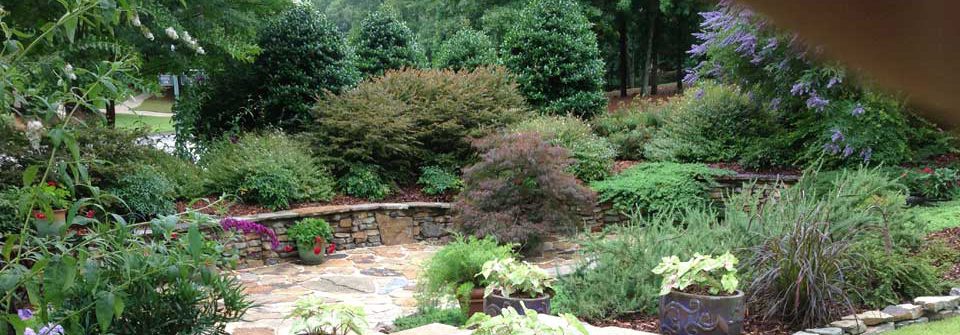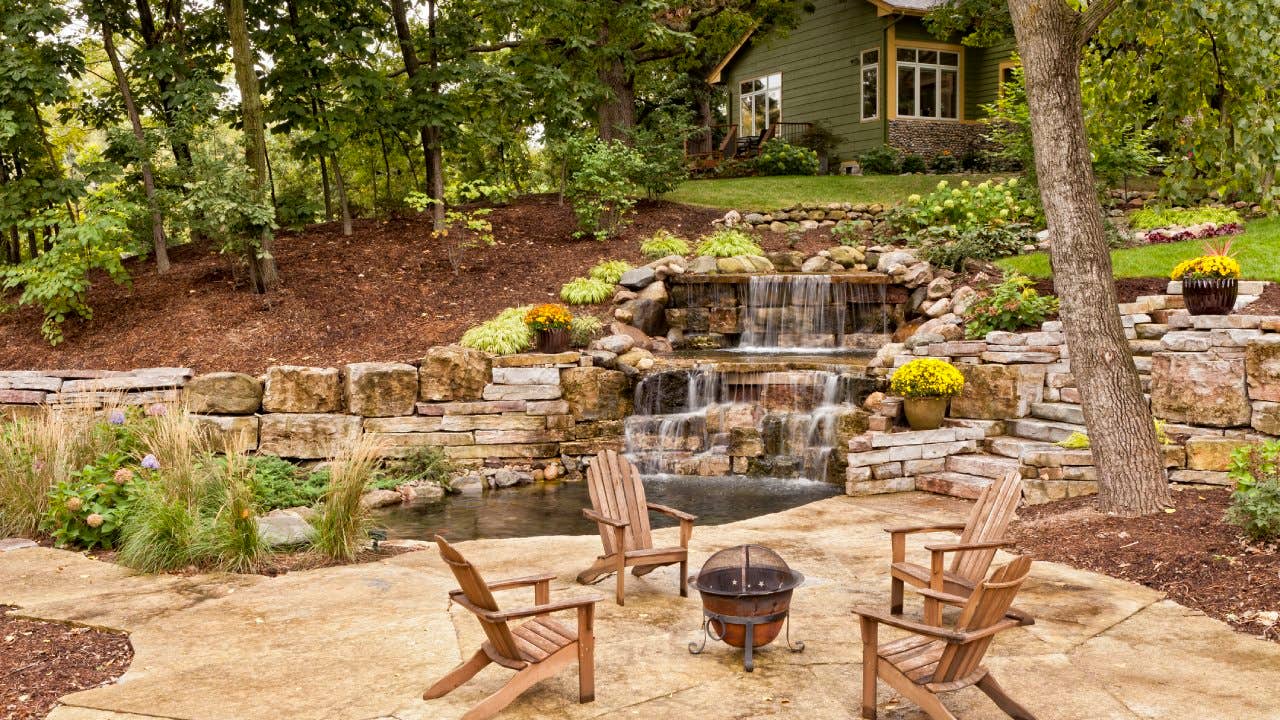Elevate Your Building's Aesthetic With Lasting Landscaping Styles and Eco-Friendly Practices

Advantages of Lasting Landscaping
Applying sustainable landscape design techniques not just saves natural sources yet likewise promotes biodiversity and enhances overall ecological wellness. One considerable advantage is the reduction of water consumption through the use of drought-resistant plants, rainfall gardens, and efficient watering systems.
In addition, lasting landscaping can boost dirt health by reducing making use of chemical fertilizers and chemicals, consequently producing a healthier environment for plant growth and useful soil organisms. This, consequently, boosts the total strength of the landscape to hold up against environmental stress factors and climate change effects - landscaping contractor Jacksonville. Additionally, sustainable landscape design practices can attract varied wild animals, including pollinators like and butterflies, cultivating an extra well balanced and vivid ecological community within the home
Incorporating Native Plants
To construct upon the benefits of lasting landscape design, a strategic focus on integrating native plants can even more boost eco-friendly strength and advertise biodiversity within the landscape. Indigenous plants are varieties that normally happen in a particular area and have actually advanced to grow in the local climate, soil problems, and ecosystem. By consisting of native plants in landscape design layouts, home owners can lower water usage, minimize the demand for chemical pesticides and plant foods, and support the neighborhood wildlife population.
Including native plants also aids in maintaining the special character and identification of an area's vegetation. These plants often need less upkeep when established, making them a lasting and cost-efficient landscape design solution over time. Additionally, indigenous plants can attract indigenous pollinators like bees and butterflies, adding to the overall wellness of the community.
When picking native plants for landscape design projects, it is vital to choose species that are appropriate to the specific environmental problems of the site. Consulting with regional baby rooms or herb yards can supply valuable assistance on picking the right native plants for a certain location. By integrating native plants into landscape design designs, residential or commercial property proprietors can develop lovely, lasting outdoor areas that profit both the community and the atmosphere.
:max_bytes(150000):strip_icc()/landscaping-on-a-budget-2131962-hero-2c4072b220ee4bd5944c1a4fe816360e.jpg)
Water Conservation Techniques
Efficient watering methods play a crucial role in lasting landscaping techniques, guaranteeing optimum water conservation efforts in outside spaces. Drip watering provides water directly to the roots of plants, decreasing evaporation and overflow.
Along with advanced irrigation techniques, xeriscaping is one more water-saving landscaping strategy that focuses on making use of drought-resistant plants, mulch, and efficient irrigation to create a low-water landscape style - bush look at more info removal Jacksonville. By picking indigenous plants that are fit to the regional environment and dirt conditions, homeowner can minimize the requirement for extreme watering, eventually preserving water and advertising a lasting outside environment
Eco-Friendly Hardscaping Concepts
Enhancing outside spaces with eco-friendly hardscaping functions can contribute anchor dramatically to lasting landscape design techniques. Opt for products like redeemed timber, recycled concrete, or natural rock to minimize environmental effect when taking into consideration hardscaping components. These materials not only add an one-of-a-kind visual attract your outside room however also decrease the need for brand-new resources removal.
Applying absorptive paving alternatives such as crushed rock or permeable concrete can help in reducing water drainage and advertise groundwater recharge. These options enable rainwater to leak right into the ground, avoiding erosion and minimizing the concern on stormwater systems.
Integrating native plants right into hardscaping styles can further boost eco-friendliness by supporting local wild animals and decreasing the demand for extreme watering or chemical treatments. By incorporating vertical yards or green wall surfaces, you can present much more plants right into metropolitan settings, improving air quality and biodiversity.
Including energy-efficient lights, such as solar-powered LEDs, into hardscaping layouts can lower electricity usage and lower your building's carbon impact. Focusing on green hardscaping ideas not just improves the charm of your exterior area however likewise demonstrates a commitment to ecological stewardship.
Maintenance Tips for Lasting Landscapes

Consistently prune plants to promote healthy and balanced growth and stop overgrowth that can lead to pest illness or problems. Use natural fertilizers to nurture the soil and plants without harmful chemicals that can leach right into the environment.
Verdict
To conclude, sustainable landscape click now design methods supply countless advantages for building owners, from improving the visual allure of the surroundings to advertising environmental preservation. By integrating native plants, carrying out water preservation methods, and using environment-friendly hardscaping concepts, homeowner can develop attractive landscapes that are likewise eco responsible. With appropriate maintenance, sustainable landscapes can flourish and contribute to a healthier ecosystem for both humans and wildlife.
Furthermore, sustainable landscape design can enhance dirt wellness by reducing the usage of chemical plant foods and chemicals, thus creating a much healthier setting for plant development and useful soil organisms.To build upon the advantages of sustainable landscaping, a strategic emphasis on incorporating indigenous plants can further boost environmental strength and advertise biodiversity within the landscape. By including indigenous plants in landscaping layouts, home owners can lower water usage, decrease the requirement for chemical pesticides and plant foods, and support the neighborhood wildlife population.
These plants typically call for much less upkeep once established, making them a affordable and lasting landscaping remedy in the long run. By integrating native plants into landscaping styles, property owners can develop gorgeous, lasting outside rooms that profit both the setting and the neighborhood.